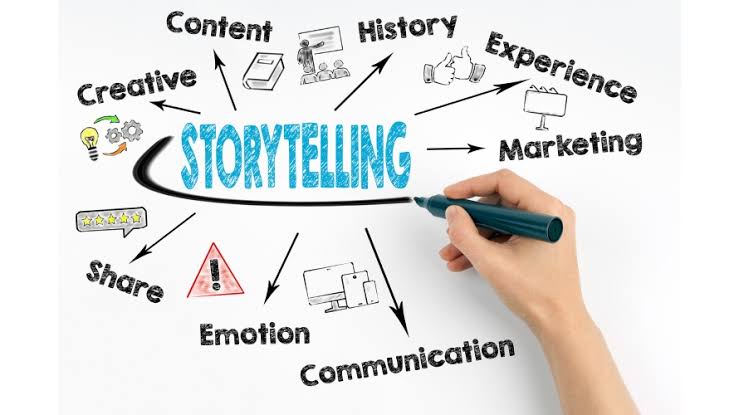
Hook, Engage, Convert: Why Emotional Storytelling Works Like Magic
Want to connect deeply with your audience? Emotional storytelling is the secret weapon of successful brands. This blog explores how crafting compelling narratives builds trust, increases conversions, and turns customers into loyal advocates. Master the art of emotional storytelling to create content that resonates and drives sales.
Table of Contents
- Introduction: Why Emotional Storytelling Matters
- The Science Behind Emotional Storytelling in Marketing
- How Brands Use Emotional Storytelling to Win Customers
- Key Elements of an Effective Brand Story
- Crafting Your Own Emotional Storytelling Strategy
- Conclusion: Win Customers Through the Power of Stories
Introduction: Why Emotional Storytelling Matters
Imagine scrolling through social media and seeing an ad. One ad simply lists a product’s features, while another tells a heartwarming story about how the product changed someone’s life. Which one do you remember? That’s the power of emotional storytelling!
In today’s saturated digital landscape, facts and figures alone won’t sell your brand. People connect with emotions, not statistics. Emotional storytelling builds trust, creates a personal bond with customers, and makes brands unforgettable.
If you want to win customers, it’s time to embrace the power of emotional storytelling.
The Science Behind Emotional Storytelling in Marketing
Marketing isn’t just about selling—it’s about connecting. Studies show that consumers make purchase decisions based on emotions first, then justify them with logic. This is why emotional storytelling is so powerful.
Here’s why it works:
- Activates the Brain: Stories stimulate multiple parts of the brain, making them more memorable.
- Creates Emotional Triggers: A strong narrative evokes emotions like happiness, nostalgia, or even fear, influencing decision-making.
- Builds Brand Loyalty: When customers feel connected to a brand’s story, they are more likely to remain loyal and advocate for it.
In short, emotional storytelling turns passive viewers into engaged customers.
How Brands Use Emotional Storytelling to Win Customers
Many successful brands have mastered emotional storytelling to boost engagement and conversions. Let’s look at some iconic examples:
1. Nike: Inspiring Stories of Perseverance

Nike doesn’t just sell shoes—it sells ambition. Their “Just Do It” campaigns feature real-life athletes overcoming challenges, making the brand synonymous with resilience and passion.
2. Apple: The Story of Innovation and Creativity

Apple’s ads focus on how their products enhance creativity, communication, and innovation. They don’t sell gadgets; they sell a lifestyle.
3. Coca-Cola: Spreading Joy and Connection

Coca-Cola’s marketing revolves around happiness and togetherness, making every sip feel like a shared experience.
These brands don’t just advertise—they tell powerful stories that make customers feel something.
Key Elements of an Effective Brand Story

Not all stories are created equal. To truly captivate your audience, your emotional storytelling should include:
1. A Relatable Hero
Your customer should see themselves in the story. Whether it’s a struggling entrepreneur or a busy parent, a relatable character makes the story impactful.
2. A Problem or Conflict
Every great story has a challenge. Highlight the pain points your audience faces and how your brand provides a solution.
3. Emotional Appeal
Use emotions like joy, hope, or nostalgia to make your story stick. People remember how you make them feel, not what you tell them.
4. A Clear Resolution
End with a transformation—how your brand helped solve the problem. A strong conclusion reinforces your message and encourages action.
Crafting Your Own Emotional Storytelling Strategy
Now that you understand the importance of emotional storytelling, how do you apply it to your brand? Here’s a step-by-step guide:
1. Know Your Audience
Understand what your audience cares about. Their struggles, dreams, and motivations should shape your narrative.
2. Identify Your Brand’s Core Emotion
What emotion do you want to evoke—trust, excitement, or empowerment? Let this emotion guide your storytelling.
3. Use a Narrative Framework
Follow the classic storytelling structure:
- Beginning: Introduce the character and their challenge.
- Middle: Show their journey and struggles.
- End: Highlight how your brand provides the perfect solution.
4. Incorporate Visual Storytelling
Images, videos, and user-generated content enhance the emotional impact of your story. A well-placed visual can make your message even more compelling.
5. Keep It Authentic
Customers can spot inauthenticity from a mile away. Share genuine stories—real testimonials, behind-the-scenes moments, and heartfelt brand journeys.
Conclusion: Win Customers Through the Power of Stories
If you want to stand out in today’s competitive market, facts alone won’t cut it. You need emotional storytelling to create a deep connection with your audience.
By weaving authentic, emotionally compelling narratives into your marketing strategy, you’ll not only win customers but turn them into lifelong advocates.
Are you ready to harness the power of emotional storytelling? Start crafting your brand story today and watch your engagement—and sales—skyrocket!
Need help with emotional storytelling? Our expert marketing team can create compelling brand narratives that drive real results. Contact us today!





